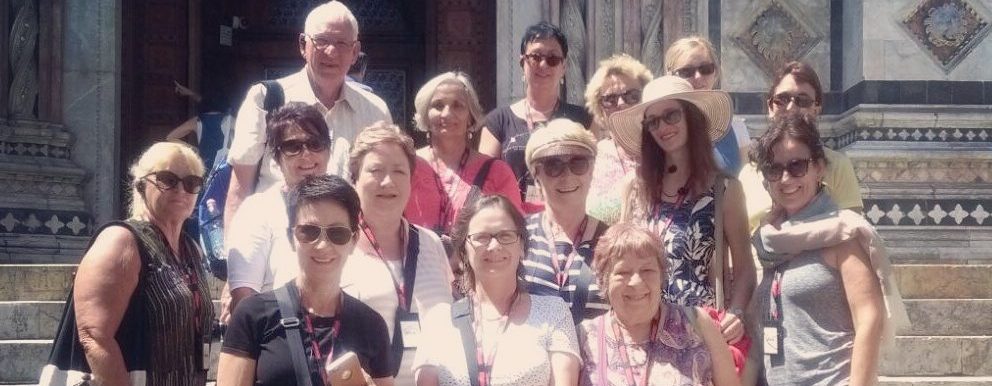Art and Museums
Listing all the museums to be visited in Siena appears a nearly impossible feat, especially when you remember that each of the city’s contradas has its own museum

Listing all the museums to be visited in Siena appears a nearly impossible feat, especially when you remember that each of the city’s contradas has its own museum. Certain places in Siena, though, stand out as must-sees, such as the Cathedral of St. Mary of the Assumption along with the “most magnificent” floor ever created, the “Door to Heaven” (the walkway immediately below the Cathedral ceiling), and the entire Cathedral complex—the Museo dell’Opera del Duomo (the Museum of the Cathedral Works) which houses the gleaming Maestà by Duccio di Buoninsegna, the so-called Crypt rediscovered only a few years ago underground beneath the Cathedral, the Baptistry with its Baptismal Font by Ghiberti, Jacopo della Quercia, and Donatello. Opposite the Duomo stands the ancient complex of the Ospedale di Santa Maria della Scala, a unique structure holding a wealth of art and culture including an archeological museum and the new exposition of the original Fonte Gaia sculptures. A few steps away from the Cathedral is the Pinacoteca, a National Museum with a complete and fascinating collection of Sienese art and the famed tablets with gold-leafed backgrounds. In the Piazza del Campo, venue of the Palio di Siena race, stands the Palazzo Comunale which is not only the seat of Siena’s political life but is also home to celebrated fresco cycles such as the Maestà and the Guidoriccio by Simone Martini, and the Effects of Good Government by Ambrogio Lorenzetti. I would invite music lovers to come and visit the splendid Accademia Musicale Chigiana. If you would like, I would be happy to show you the Synagogue here and illustrate the thousand-year-old tradition of Siena’s Jewish community. Among the lesser known yet altogether intriguing museums I would call your attention to the Archivio di Stato which preserves priceless documents and treasures such as the collection of “Biccherne,” the centuries-old painted tablets originally used as front-covers for the city’s ledger books.



